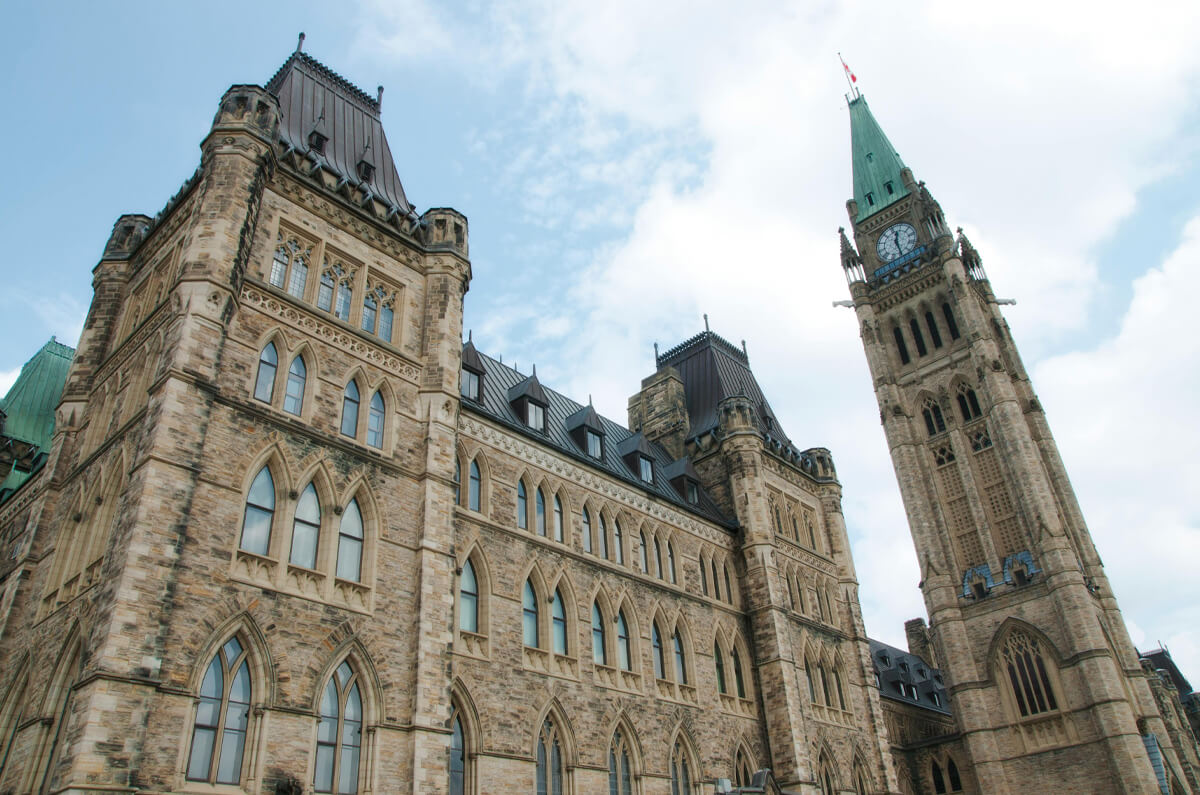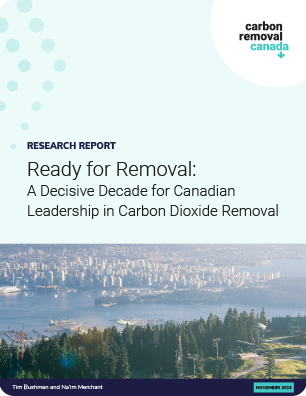What do solar photovoltaics, light-emitting diode bulbs, and semiconductors have in common? They have all received government support worldwide to help create new market opportunities, which unearthed valuable learnings needed to scale over time. Such support can help innovations enter the marketplace through the power of the public purse, including mechanisms that position governments as major early buyers of nascent technologies. Demand-side government procurement programmes should be harnessed to help address the climate crisis and provide crucial support for a new frontier of solutions: removing carbon dioxide (CO2) from the atmosphere.
The Intergovernmental Panel on Climate Change has clearly articulated the need for large-scale carbon dioxide removal (CDR) to help achieve global climate goals in parallel with rapid and deep reductions in greenhouse gas emissions. Getting to scale will require a significant mobilisation of capital and the creation of novel funding instruments that build upon an estimated baseline of global spending on new CDR capacity of $200 million from 2020 – 2022. The industry must also grapple with a number of questions related to financial support. Who pays for the societal service of CDR and its global benefits? What is the proper role of the public vs. private sector? How does society mobilise enough capital for CDR in addition to the trillions of dollars annually that are already needed for reducing emissions?
Like other industries before, governments will need to play a crucial and formative role in helping to fund, build, and scale the CDR industry. The need for government support is due in part to the unique value proposition of CDR, whose services and societal benefits do not necessarily result in creating a consumer-driven physical product and, therefore, may need to be treated as a public good akin to waste management. Such a proposition suggests a critical role for public sector support to help jumpstart the sector.
Just as government ‘Buy Clean’ programmes are seen as powerful tools to reduce emissions through creating market demand for green construction materials, government procurement can also help pull CDR solutions out of the lab and into the market. Through deployment-led innovation, governments can grow the supply of high-quality CDR projects and de-risk a portfolio of viable solutions, further unlocking private-sector funding.
The U.S. government is leading the charge in this area with its first-of-a-kind government procurement programme for CDR services through the CDR Purchase Pilot Prize, which will allocate USD35 million in cash awards and purchasing agreements to qualifying projects. As Canada looks for new ways to reach its climate goals, a CDR procurement programme would help develop new CDR solutions and create an enduring demand signal that private markets can complement.
Canada should, therefore, establish a federal programme that will enter into procurement contracts for CDR over the lifetime of a qualifying project, with consideration of the following design elements:
Target Setting
- Near-term: By 2030, the government could commit to purchasing CDR to account for a portion of any shortfall in meeting its Nationally Determined Contribution with a defined ceiling limit for an eligible purchasing amount not to distract from the imperative of reducing emissions.
- Mid-term: By 2050, the federal government should include a supplementary addendum to the Net Zero Emissions Accountability Act that formalises the use of CDR to help meet its net zero commitment, including through separate targets for emissions reductions and CDR.
- Intergovernmental coordination: Provincial and territorial governments should consider similar programmes to help meet sub-national climate targets, which could be administered with the federal programme.
Programme Design
- General: Develop a clear decision-making framework, intended programme outcomes, and well-defined success metrics. The goals of the programme and its selection criteria should be clear, measurable and attainable. Programmatic roles and responsibilities should be clearly delineated across participating governmental entities.
- Standards and protocols: Establish a cross-cutting federal standards framework and project-specific protocols that draw from those developed in the compliance and voluntary markets. Such outputs could stem from federally approved offset protocols and/or leading industry frameworks for scientific quality and should promote rigorous measurement, monitoring, reporting and verification (MMRV) requirements to help ensure project quality during and after completion, while seeking to promote interoperability of standards and protocols with other political jurisdictions.
- Program eligibility: All long-duration CDR methods and project types should be eligible for funding according to established criteria for high-quality CDR and required performance standards for project selection. Eligibility criteria should include demonstrating that the project has a realistic pathway to scale.
- Project evaluation: Assemble a panel of industry experts to assess submissions based on the quality criteria and performance standards. The panel may include (but not be limited to) experts across government, academia, philanthropy, First Nations and Indigenous communities, and non-governmental organisations. Procurement decisions should be standards-based and approached through a technology-neutral portfolio of solutions according to a federal standards framework to help guide project selection.
- Transparency: The programme should focus on knowledge creation, technology advancement and information sharing. Entities that receive funding should, therefore, commit to a level of transparency that is deemed necessary for community learning to include factors such as estimated current and future project costs, the contract price for carbon credits, estimated duration of carbon storage, cradle-to-grave life cycle assessments and MMRV plans. The programme could be designed through a reverse auction mechanism to help promote transparency in price discovery.
Funding Mechanisms
- Budget shifts: Seek to make the programme revenue-neutral through budgetary re-directs rather than needing to raise new revenues for funding.
- Public-private partnership: Possible creation of a public-private partnership model to maximise available capital support and share risk related to technology performance and credit delivery (i.e., cost-sharing and risk-sharing arrangement). The government could consider purchasing credits from projects that have federally approved protocols. In contrast, the private sector could co-purchase credits from those projects and/or purchase from other projects that meet leading industry standards.
The need for funding the twin challenges of reducing emissions across the economy and removing CO2 from the atmosphere is urgent. Government procurement programmes are an essential tool that can catalyse the scale-up of high-quality projects and position CDR on a trajectory to help meet climate goals.






